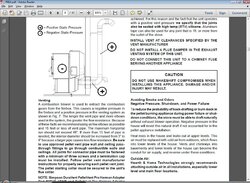I am debating an OAK install for my Harman TL200/Exception stove.
My home is well insulated and well sealed.
My stove burns well, but OAK has a good argument overall.
I see that some people use air from crawlspace in an indirect OAK.. to help with back draft, condensation, heat loss when adding air.
Anyone have experience with this stove and OAK?
Thanks
My home is well insulated and well sealed.
My stove burns well, but OAK has a good argument overall.
I see that some people use air from crawlspace in an indirect OAK.. to help with back draft, condensation, heat loss when adding air.
Anyone have experience with this stove and OAK?
Thanks



